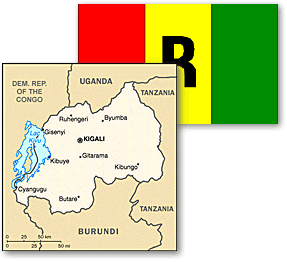Snapshot of Rwanda
Location:
Rwanda is a land-locked country. To the north and west, Rwanda is
bordered by the
Democratic Republic of Congo. Burundi borders Rwanda to the south, while
Tanzania borders
Rwanda to the east.
Land Area:
Rwanda extends over 10,000 square miles, an area about the size of
Maryland.
Terrain:
Rwanda’s landscape is most noted for its abundant hills and
uplands.
Climate:
The weather is Rwanda is mild and temperate. There are two rainy
seasons.
Population:
There are 7.6 million people living in Rwanda. Almost every Rwandan
belongs to one of
two ethnic groups: Hutu (85% of the population) and Tutsi (14%).
Language:
Three languages are widely spoken in Rwanda: French, English, and
Kinyarwanda.
Major Cities:
The capital of Rwanda is Kigali, a city with a population of about
236,000. Other
cities include Gitarama, Butare, Ruhengeri, and Gisenyi.
Government:
Rwanda achieved independence from Belgium on July 1, 1962. In 1994, a
civil war, which
culminated in an ethnic genocide, consumed the lives of many thousands of
Rwandans. A
government of national unity formed in the wake of the civil war. Though
the right of
suffrage is suspended at the present time, the national unity government
is leading a
transition to multi-party democracy. The president of Rwanda is Pasteur
Bizimunga.
Economy:
Rwanda’s economy depends primarily on rain-fed, semi-subsistence
farming. The
civil war in 1994 greatly disturbed economic activity and food
production. Since 1994, the
Rwandan economy has grown steadily and food production is approaching
pre-war levels.
Rwanda has few natural resources. Coffee and tea are it biggest
exports.

![]()


![[White House icon]](/New/images/home_pin.gif)
![[Help Desk icon]](/New/images/help_pin.gif)